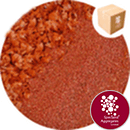|
|
|
|
|
|
 |
Individual Packs
Order and Deliver
See products for pack sizes. |
 |
Multi Packs
Order and Deliver
Convieniently packed for ease of movement. See products for pack and pallet sizes. |
 |
Bulk Bags
Order and Deliver
Selected products available bulk packed for contractors. See products for specific information. |
 |
Rockery Stone Deliveries
Order and Deliver
Caged stone delivery, packing may vary. |
 |
Order For Collection
Order for collection from a warehouse. See products for pack sizes and collection details. |
|
|
|
|
|
| Specialist Aggregates Group |


|
|
|
Lytag® provides an effective solution to the ancient problem of soil compaction.
The study of soil is a complex subject, however, the principles of compaction with regard to horticulture are relatively straight forward. A well tended soil will be friable with gaps between the particles which allow for the migration of water, nutrients and the passage of oxygen vital for healthy plant growth.
Plants can survive coppicing or even defoliation by a roaming dinosaur, but once a soil becomes compacted pore spaces are lost, roots find it difficult to penetrate, rainwater runs off rather than soaks in and the absence of oxygen leads to anaerobic conditions leading to poor root development.
It is widely thought that dinosaurs became extinct as a result of a meteorite strike around 65 million years ago. However it’s a fascinating conjecture that trampling by the massive beasts, some weighing up to one hundred tonnes may have caused widespread soil compaction leading to failure of vegetation and loss of habitat which could have also ultimately led to their demise.
The study of soil is a complex subject requiring an understanding of geology, climate and situation. However, the principles of compaction with regard to horticulture are relatively straight forward. A well tended soil will be friable with gaps between the particles which allow for the migration of water, nutrients and the passage of oxygen vital for healthy plant growth. Plants can survive coppicing or defoliation by a roaming dinosaur, but once a soil becomes compacted the pore spaces are lost, roots find it difficult to penetrate, rainwater runs off rather than soaks in and the absence of oxygen leads to anaerobic conditions leading to poor root development.
Soil compaction is all too readily brought about especially if the ground is wet. It is easy to envisage the effects of mechanical machinery, where not only weight but also vibration leads to compaction. (If Hollywood is to be believed dinosaurs in “Jurassic Park” also did a good job on vibrating the ground!), however, the passage of foot-traffic at an event or tourist attraction or even the passage of competitors across well tended sports- turf will also have a compacting effect.
To an extent nature can repair itself; freeze/thaw conditions will help to break up soils, whilst worms and ants can also do a great job of aerating soil and introducing organic matter.
Lytag® has been shown to be an ideal medium for preventing and improving compacted soils. Its spherical shape and uniform grading provide for excellent hydraulic and gaseous exchange. When applied as slit drainage to sports turf construction, Lytag® encourages deeper root systems, in turn resulting in the reduction of fertiliser and water needed during the growing season.
Lytag® is has a pH of 7 to 8 and is inert to natural chemicals found in the ground. An additional benefit of Lytag’s spherical shape makes the product very strong, this causes the granules to resist compaction and reduce the risk of “silting up”.
Lytag® has many applications, and since its introduction in the late 50’s over 16 million tonnes of have been manufactured from recycled pulverised fuel ash in the UK in turn reducing the need to quarry approximately twice that weight of “new” aggregates.
Our images show Steph looking for fossil footprints on Portland's Jurassic Coast, together with an example of tourism having caused compaction, leading to loss of vegetation, water run-off and subsequent erosion. Our final image shows Lytag being used in slit drainage in sports turf.
|
|
 |
|
|



 About Us
About Us Delivery
Delivery Safety Information
Safety Information Terms and Conditions
Terms and Conditions Privacy Policy
Privacy Policy Press Guidelines
Press Guidelines Film Set Design
Film Set Design Bespoke Colouring
Bespoke Colouring Contract Packing
Contract Packing Research and Development
Research and Development Project Detailing
Project Detailing Public Sector Procurement
Public Sector Procurement Product Volume Guide
Product Volume Guide Product Reviews
Product Reviews Aggregate Wiki and Site Information
Aggregate Wiki and Site Information Helpdesk
Helpdesk



 Brexit Updates
Brexit Updates Product Size Guide
Product Size Guide












 Facebook
Facebook
 Twitter
Twitter